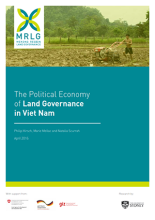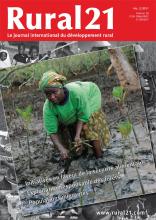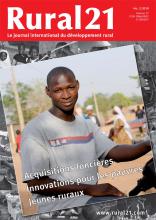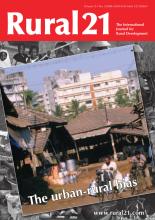Land Library Search
Through our robust search engine, you can search for any item of the over 73,000 highly curated resources in the Land Library.
If you would like to find an overview of what is possible, feel free to peruse the Search Guide.
/ library resources
Showing items 1 through 9 of 17.This country level analysis addresses land governance in Viet Nam in two ways.
L’urbanisation est souvent considérée comme ayant des effets néfastes sur le développement rural. En fait, c’est tout le contraire.
Rural development and urbanisation are often seen as competing, but in most cases are intimately linked. It is essential that policies re? ect and support the many positive links between rural and urban areas, enterprises and people.
In today’s China, about 220 million rural migrant workers are on the move – this is more than two thirds of the US population – and their number is set to increase in the course of the country’s urbanisation process.
More and more young people are leaving the rural areas and migrating to the cities. Although the industrial and the developing nations come from different starting points, such migration ultimately has the same effect on village life and the rural areas everywhere.
Dans les pays en développement, l'élevage représente plus d'un tiers du produit intérieur agricole brut ; la croissance et la transformation rapides du secteur de l'élevage dans de grandes régions de la planète ont débouché sur une amélioration des revenus et de la situation alimentaire d?un gran
The early development strategies of both China and India were urban- and industry-focused, discounting the importance of rural development. Despite sweeping reforms in both countries, the urban bias and subsequent spatial disparities still exist today.
Development assistance is contingent upon the efficiency and effectiveness of delivery mechanisms. EU regional policy offers an appealing paradigm of how to achieve tangible outcomes with sound financial management
Dar es Salaam is one of the fastest growing cities in sub-Saharan Africa. In its rapidly expanding peri-urban fringe poor migrants from distant rural areas settle down on plots they can afford that provide access to urban markets.





